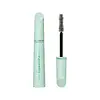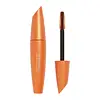What's inside
What's inside
 Key Ingredients
Key Ingredients

 Benefits
Benefits

 Concerns
Concerns

 Ingredients Side-by-side
Ingredients Side-by-side

Water
Skin ConditioningParaffin
PerfumingStearic Acid
CleansingPvp
Emulsion StabilisingCetyl Alcohol
EmollientCera Microcristallina
Emulsion StabilisingHydrogenated Vegetable Oil
EmollientArginine
MaskingPolysorbate 20
EmulsifyingPropylene Glycol
HumectantRhus Verniciflua Peel Wax
Copernicia Cerifera Cera
Emollient2,3-Butanediol
HumectantStearyl Stearate
EmollientSynthetic Wax
AbrasivePanthenol
Skin ConditioningCandelilla Cera
EmollientCaprylyl Glycol
EmollientHectorite
AbsorbentSimethicone
EmollientSilica
AbrasiveTocopheryl Acetate
AntioxidantKaolin
AbrasivePantolactone
HumectantArgania Spinosa Kernel Oil
EmollientCamellia Sinensis Seed Oil
HumectantCellulose
AbsorbentPassiflora Edulis Seed Oil
EmollientRicinus Communis Seed Oil
MaskingSclerocarya Birrea Seed Oil
HumectantSimmondsia Chinensis Seed Oil
EmollientCocos Nucifera Oil
MaskingCaprylic/Capric Triglyceride
MaskingPersea Gratissima Oil
Skin ConditioningBiotin
AntiseborrhoeicCeramide Ng
Skin ConditioningChamomilla Recutita Flower Extract
MaskingCucumis Sativus Fruit Extract
EmollientAloe Barbadensis Leaf Extract
EmollientTocopherol
AntioxidantIron Oxides
CI 77007
Cosmetic ColorantWater, Paraffin, Stearic Acid, Pvp, Cetyl Alcohol, Cera Microcristallina, Hydrogenated Vegetable Oil, Arginine, Polysorbate 20, Propylene Glycol, Rhus Verniciflua Peel Wax, Copernicia Cerifera Cera, 2,3-Butanediol, Stearyl Stearate, Synthetic Wax, Panthenol, Candelilla Cera, Caprylyl Glycol, Hectorite, Simethicone, Silica, Tocopheryl Acetate, Kaolin, Pantolactone, Argania Spinosa Kernel Oil, Camellia Sinensis Seed Oil, Cellulose, Passiflora Edulis Seed Oil, Ricinus Communis Seed Oil, Sclerocarya Birrea Seed Oil, Simmondsia Chinensis Seed Oil, Cocos Nucifera Oil, Caprylic/Capric Triglyceride, Persea Gratissima Oil, Biotin, Ceramide Ng, Chamomilla Recutita Flower Extract, Cucumis Sativus Fruit Extract, Aloe Barbadensis Leaf Extract, Tocopherol, Iron Oxides, CI 77007
Water
Skin ConditioningGlyceryl Stearate
EmollientAmmonium Acrylates Copolymer
Disteardimonium Hectorite
StabilisingPropylene Glycol
HumectantStearic Acid
CleansingCopernicia Cerifera Wax
Triethanolamine
BufferingAcrylates Copolymer
Synthetic Wax
AbrasivePolyvinyl Alcohol
Lecithin
EmollientPropylene Carbonate
SolventPolyethylene
AbrasiveOleic Acid
EmollientAlcohol Denat.
AntimicrobialBenzyl Alcohol
PerfumingGlycerin
HumectantXanthan Gum
EmulsifyingPanthenol
Skin ConditioningPhenoxyethanol
PreservativePropylparaben
PreservativeMethylparaben
PreservativeEthylparaben
PreservativeSodium Laureth Sulfate
CleansingTrisodium EDTA
Simethicone
EmollientTocopheryl Acetate
AntioxidantTocopherol
AntioxidantIron Oxides
Titanium Dioxide
Cosmetic ColorantUltramarines
Water, Glyceryl Stearate, Ammonium Acrylates Copolymer, Disteardimonium Hectorite, Propylene Glycol, Stearic Acid, Copernicia Cerifera Wax, Triethanolamine, Acrylates Copolymer, Synthetic Wax, Polyvinyl Alcohol, Lecithin, Propylene Carbonate, Polyethylene, Oleic Acid, Alcohol Denat., Benzyl Alcohol, Glycerin, Xanthan Gum, Panthenol, Phenoxyethanol, Propylparaben, Methylparaben, Ethylparaben, Sodium Laureth Sulfate, Trisodium EDTA, Simethicone, Tocopheryl Acetate, Tocopherol, Iron Oxides, Titanium Dioxide, Ultramarines
 Reviews
Reviews

Ingredients Explained
These ingredients are found in both products.
Ingredients higher up in an ingredient list are typically present in a larger amount.
Panthenol is a common ingredient that helps hydrate and soothe the skin. It is found naturally in our skin and hair.
There are two forms of panthenol: D and L.
D-panthenol is also known as dexpanthenol. Most cosmetics use dexpanthenol or a mixture of D and L-panthenol.
Panthenol is famous due to its ability to go deeper into the skin's layers. Using this ingredient has numerous pros (and no cons):
Like hyaluronic acid, panthenol is a humectant. Humectants are able to bind and hold large amounts of water to keep skin hydrated.
This ingredient works well for wound healing. It works by increasing tissue in the wound and helps close open wounds.
Once oxidized, panthenol converts to pantothenic acid. Panthothenic acid is found in all living cells.
This ingredient is also referred to as pro-vitamin B5.
Learn more about PanthenolPropylene Glycol is an odorless, colorless liquid. As a humectant, it helps skin retain moisture. It also aids in delivering active ingredients.
Another role of this ingredient is preventing a product from melting or freezing. Propylene glycol also adds antimicrobrial properties to a product, elongating product lifespan.
This ingredient is considered an organic alcohol and commonly added into both cosmetics and foods.
Those with sensitive skin or conditions may develop a rash when using this ingredient.
Learn more about Propylene GlycolSimethicone is a silicone. It is an emollient and used to reduce foaming in a product. It is also often used to coat sunscreen ingredients for better spreadability.
This ingredient is created by mixing dimethylpolysiloxane and hydrated silica.
Stearic Acid is a fatty acid. It is an emollient, emulsifier, and texture enhancer.
As an emollient, stearic acid helps soften skin. It aids the skin's protective barrier by preventing water loss. It also provides a gentle cleansing effect without stripping away natural oils.
Stearic acid may also be used to enhance the texture of products. It can add volume and stabilize ingredients such as water and oil. This can help water and oil ingredients from separating.
Sources of stearic acid include animal or vegetable fats/oils such as coconut or shea. It can be naturally found in butter, cocoa butter, shea butter, vegetable fats, and animal tallow.
This ingredient may not be Malassezia folliculitis, or fungal-acne safe.
Learn more about Stearic AcidSynthetic Wax is created from fossil fuels such as natural gas. It is used to enhance texture, adjust pH, and as an occlusive.
It may also be used as an abrasive ingredient to exfoliate the skin.
Synthetic Wax may not be fungal acne safe.
Learn more about Synthetic WaxTocopherol (also known as Vitamin E) is a common antioxidant used to help protect the skin from free-radicals and strengthen the skin barrier. It's also fat soluble - this means our skin is great at absorbing it.
Vitamin E also helps keep your natural skin lipids healthy. Your lipid skin barrier naturally consists of lipids, ceramides, and fatty acids. Vitamin E offers extra protection for your skin’s lipid barrier, keeping your skin healthy and nourished.
Another benefit is a bit of UV protection. Vitamin E helps reduce the damage caused by UVB rays. (It should not replace your sunscreen). Combining it with Vitamin C can decrease sunburned cells and hyperpigmentation after UV exposure.
You might have noticed Vitamin E + C often paired together. This is because it is great at stabilizing Vitamin C. Using the two together helps increase the effectiveness of both ingredients.
There are often claims that Vitamin E can reduce/prevent scarring, but these claims haven't been confirmed by scientific research.
Learn more about TocopherolTocopheryl Acetate is AKA Vitamin E. It is an antioxidant and protects your skin from free radicals. Free radicals damage the skin by breaking down collagen.
One study found using Tocopheryl Acetate with Vitamin C decreased the number of sunburned cells.
Tocopheryl Acetate is commonly found in both skincare and dietary supplements.
Learn more about Tocopheryl AcetateWater. It's the most common cosmetic ingredient of all. You'll usually see it at the top of ingredient lists, meaning that it makes up the largest part of the product.
So why is it so popular? Water most often acts as a solvent - this means that it helps dissolve other ingredients into the formulation.
You'll also recognize water as that liquid we all need to stay alive. If you see this, drink a glass of water. Stay hydrated!
Learn more about WaterThis ingredient is a combination of red, black, and yellow iron oxide pigments. This combination of colors is usually found in foundation, because it results in a "skin" color.